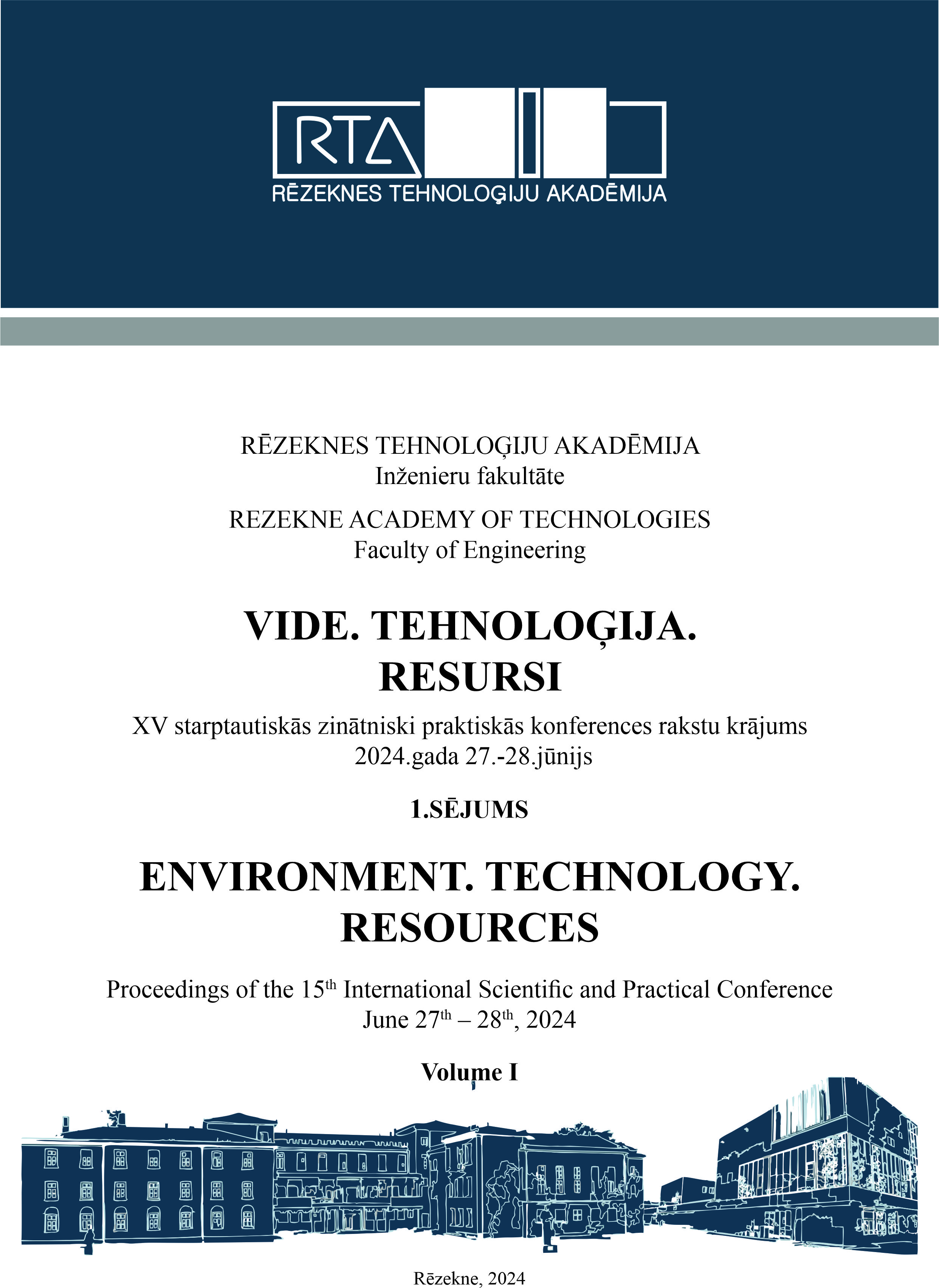EVALUATION OF OREGANO (ORIGANUM VULGARE L.) ACCESSIONS BY COMPLEX OF FUNCTIONAL TRAITS
DOI:
https://doi.org/10.17770/etr2024vol1.7984Keywords:
oregano, accessions, variability, traitsAbstract
During 2012-2020, 44 oregano (Origanum vulgare L. ssp. vulgare) accessions had been described at the ex situ collection of aromatic and medicinal plants (N 56º39 ́45.3 ́ ́; E 23º45 ́15.2), located at the Latvia University of Life Sciences and Technologies. The accessions were evaluated for morphological traits, growth and yield parameters, phenological properties, biochemical indices, plant resistance to diseases and pests, winter hardiness etc., using international Draft Descriptor List Origanum vulgare L. In our study, multi-criteria analysis was used to assign an overall value to each plant material as well accessions were grouped by complex of functional traits. In total, eleven accessions No. 2, 3, 12, 14, 17, 18, 24, 28, 29, 43 and 44, which had high evaluation of morphological and phenological properties, yield components, resistance to diseases and pests as well as winter hardiness, have the best growing potential in commercial plantations. Accessions No. 3, 9, 11, 14, 17, 23, 24, 26, 35 and 42, which were characterised by rare and unique morphological indices, high winter hardiness as well as resistance to diseases and pests, have the best potential as ornamentals. Accessions No. 23, 29 and 41 were selected as the best for food because of specific parameters, including yield`s quality (especially by content of C vitamin). Grouping or oregano accessions by complex of functional traits is important for selection the most valuable of them with specific features needed for cultivation, processing and trade.
Downloads
References
A. Asdal, Ed., Spice- and medicinal plants in the Nordic and Baltic Countries. Conservation of genetic resources. Alnarp: Nordic Gene Bank, 2006.
A. Azizi, F. Yan and B. Honermeier, "Herbage yield, essential oil content and composition of three oregano (Origanum vulgare L.) populations as affected by soil moisture regimes and nitrogen supply, " Ind. crops and prod., vol. 29, pp. 554 –561, 2009.
I. Žukauska, "Garšaugu ģenētiskie resursi Latvijā," Agron. Vēst., No. 10, pp. 241–247, 2008.
I. Sivicka, "Ecological assessment of wild populations and ex situ conservation of genetic resources of oregano (Origanum vulgare L.) in Latvia," Ecol. & Saf., vol. 6, part 1, pp. 254–260, 2012.
I. Žukauska and I. Sivicka. Draft Descriptor List Origanum vulgare L. Rome: ECPGR, 2011.
K. Kampuss, "Upeņu un jāņogu (Ribes L.) ģenētisko resursu izpēte Latvijā," Dr. thesis, Latvijas Lauksaimniecības universitāte, Jelgava, Latvia, 2005.
O. Kosakowska and W. Czupa, "Morphological and chemical variability of common oregano (Origanum vulgare L. subsp. vulgare) occurring in eastern Poland,", Herba Pol., vol. 64, No.1, pp. 11–21, 2018.
R. Nurzýnska-Wierdak, "Herb yield and chemical composition of common oregano (Origanum vulgare L.) essential oil according to the plant`s development stage," Herba Pol., vol. 55, No. 3, p. 55–62, 2009.
Z. Węglarz, O. Kosakowska, J. Przybył, E. Pióro-Jabrucka and K. Bącek, "The quality of greek oregano (O. vulgare L. subsp. hirtum (Link) Ietswaart) and common oregano (O. vulgare L. subsp. vulgare) cultivated in the temperate climate of Central Europe," Foods, vol. 9, 1671, 2020.
A. Azizi, "Genetic, chemical and agro-morphological evaluation of the medicinal plant Origanum vulgare L. for marker assisted improvement of pharmaceutical quality," Dr. thesis, Justus Liebig University, Giessen, Germany, 2010.
Downloads
Published
Issue
Section
License
Copyright (c) 2024 Irina Sivicka, Aleksandrs Adamovičs

This work is licensed under a Creative Commons Attribution 4.0 International License.


